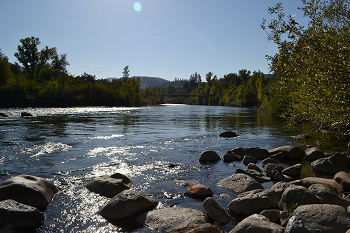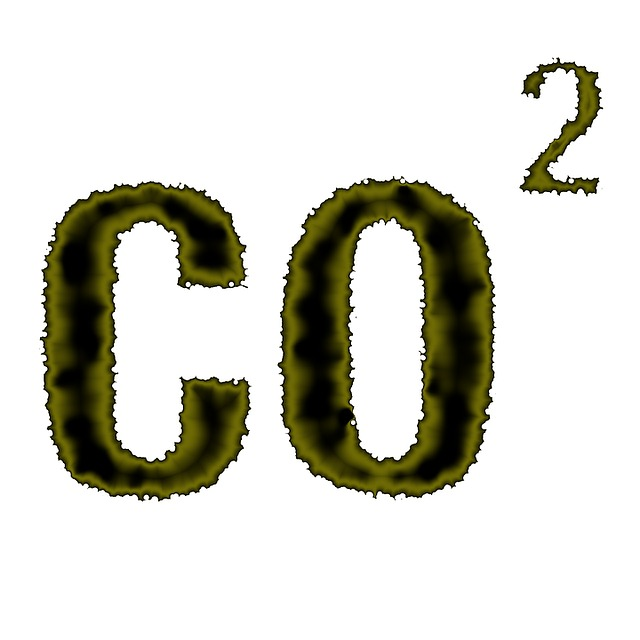
What's Ahead in Environmental Policy
Climate Change
Water
Energy Efficiency
What's Ahead in Environmental Policy
A new year has just begun, and the legislature has returned to Sacramento to begin a new two-year session.
Each year, Sierra Club California staff and volunteers review hundreds of bills and spend countless hours at regulatory agencies, advocating for the environment, the planet and the future. Below, we highlight a few of the anticipated activities that will dominate within three important policy areas: energy efficiency, climate change, and water.
By Kathryn Phillips
President-elect Donald Trump has made no secret of his desire to roll back federal regulations and policies that cut climate pollution. Given this, California’s leadership on climate change policies is going to be more important than ever to help address what Governor Jerry Brown rightly calls “the existential threat of our time.”
In 2017, the California Air Resources Board (CARB) will be the main venue for implementing several recent and new pieces of climate legislation, while continuing to stay the course on existing regulations that are key to reducing greenhouse gas emissions. At the Capitol, legislators will consider at least two significant bills on climate policy.
Using California’s Purchasing Power to Cut Industrial Pollution
The state spends billions of dollars each year on building and repairing infrastructure, from bridges to state buildings. Tons of steel, cement and other heavy-duty construction products go into that infrastructure. Tons of climate and air pollution are produced in the process of manufacturing those products. How much pollution is produced varies from factory to factory.
State agencies can use their purchasing power to reduce pollution by taking into account factory emissions for certain products like steel and cement when evaluating bids on infrastructure projects. That is, California can “buy clean”. By doing so, the state can help level the playing field for manufacturers who have invested in pollution control. Legislation promoting a buy clean approach will be introduced late this month, and we’ll be helping push it. Watch for more details in future newsletters.
Cap-and-Trade: Renewed or Replaced?
Over the last two years, the legislature has failed to pass legislation specifically renewing CARB’s authority to continue its controversial cap-and-trade program beyond 2020. Governor Brown made it abundantly clear on January 10, as he released his budget proposal, that getting a two-thirds vote bill passed that extends cap-and-trade would be one of his administration’s legislative priorities. Without missing a beat, legislators started introducing spot bills about the cap-and-trade program.
Recent preliminary research by a team at the University of Southern California suggests that California’s cap-and-trade program’s offset provisions have allowed large greenhouse gas emitters to avoid installing control devices that would also reduce local air pollution. Sierra Club California has argued in the past that this would be one of the program’s consequences. As the debate about renewing cap-and-trade progresses at the legislature, a key question will be how—and whether—cap-and-trade’s proven problems can be corrected.
Setting the Stage to Achieve New Targets
Last year, three major laws on climate change policy (AB 197, SB 32, and SB 1383) passed that were designed to lead to new or stronger rules to help cut climate pollution. Early this year, guided by the new laws, CARB will finish updating a scoping plan that lays out the strategies to meet assertive climate pollution reduction targets through 2030.
Pushing for Zero-Emission Vehicles and Buses
Also early this year, the California Air Resources Board will release an extensive report on the state of the technology for zero-emission passenger cars and light-duty trucks. The report is expected to lay the groundwork for future strengthening of California’s zero-emission vehicle (ZEV) rule—a rule that has been a central force pushing development and commercialization of electric vehicles.
Before the end of 2017, CARB is expected to consider adopting a rule that would require public transit agencies to gradually transition their bus fleets to zero-emission buses.
Both of these zero-emission programs will be a Sierra Club California focus at CARB.

By Kyle Jones
Californians are hoping that 2017 will deliver enough rain and snow to provide drought relief. But rainfall alone won’t solve many of California’s most challenging water problems. The state needs to reform its water system policies.
This year will be pivotal for regulatory agency decisions that will either put California on a more rational path or tie it to more decades of unsustainable water policies.
Big Decisions on Delta Tunnels
This year will see further action on permitting for the Governor’s proposed twin tunnels to send water out of the Delta. The documents for the project that are required for it to comply with the California Environmental Quality Act were released on December 30, and lawsuits challenging the adequacy of the environmental review are sure to follow.
The Obama Administration recently announced it would accelerate work required by the Endangered Species Act to determine what impact the tunnels will have on the imperiled fish and wildlife of the Delta. This is disappointing since it will force scientists to rush needed research. Federal permits allowing the tunnels proponents to harm endangered species while constructing and running the tunnels are expected to be decided in April.
Additionally, the State Water Resources Control Board (Water Board) will enter part 2 of its permitting program for the tunnels under the Clean Water Act. Sierra Club California opposes granting the permit because we believe the tunnels cannot be constructed and operated without broadly harming wildlife.
Setting Instream Flows to the Delta
An ongoing effort by the Water Board to determine how much water must flow from the Sacramento and San Joaquin river systems into the Delta will continue throughout 2017.
Phase 1 of the water flows update calls for 30-50% of water from three major tributaries to the San Joaquin River to remain instream to help salmon recover. This is much lower than the 50-60% needed according to biologists. Currently, diversions of water take almost 80% of the water from these streams. A decision on this plan is expected this summer.
Phase 2 of the update, which determines flows needed from the Sacramento River and its tributaries, will also begin ramping up this year.
Stopping Dam Construction
The California Water Commission recently submitted to the Office of Administrative Law finalized regulations on how to spend $2.7 billion allotted by the Proposition 1 water bond for water storage. Assuming these regulations pass muster, 2017 will see storage projects applying for some of these funds. The application field is expected to be dominated by conventional dam builders, but climate-resilient groundwater storage projects are also eligible to apply. We’ll be tracking the applications and challenging those that overstate project benefits.
By Edward Moreno
Powering the state with more clean energy is one of the most important ways in which California is fighting off the worst climate disruption. Especially, its implementation of effective energy efficiency policy.
On October 7, 2015, the world watched as Governor Jerry Brown signed the historic Senate Bill 350: Clean Energy and Pollution Reduction Act (de Leon, Chapter 547, Statutes of 2015) (SB 350). This bill requires that the state double statewide energy efficiency (EE) savings in electricity and natural gas end uses by 2030. That means the California Energy Commission (CEC) is charged with identifying any and all potential EE savings opportunities for the state and establishing statewide 2030 EE targets.
It will largely accomplish this task through existing channels which have already made California a world leader in energy efficiency policy and implementation. These include:
The Appliance Efficiency Standards, Title 20 of the California Code of Regulations, through which the CEC will continue to target new appliances for regulation to make them more efficient.
The Building Efficiency Standards, Title 24, part 6 of California Code of Regulations, are designed to improve energy efficiency in newly constructed residential and non-residential building stock in California. These standards are to culminate in the achievement of zero net energy for all new residential and commercial builds by 2020 and 2030 respectively. Now this is the first year of a three-year cycle so we will see a lot of proposals targeted at various aspects of home construction. Sierra Club will be heavily engaged in this process through broad coalitions with many nontraditional partners including labor groups and building industry partners.
The Existing Buildings Energy Efficiency Action Plan (EBEE) Action Plan, which requires that the state’s relevant agencies, through the EBEE Action Plan, provides a 10-year framework to double the energy and water efficiency in existing commercial, residential and public buildings.
During this upcoming year the CEC will focus on developing regulations for disclosure of whole-building energy usage and benchmarking, specifically for buildings larger than 50,000 square feet. This is a critical first step in reaching our climate goals because the regulations will help building owners really think in terms of energy consumption and will help them make more informed decisions regarding energy efficiency improvements.
Finally, the CEC is developing a study on barriers for low-income customers to energy efficiency, including those in disadvantaged communities. The study includes recommendations on how to increase access to energy efficiency and weatherization investments to low-income customers. The study is expected to inspire legislation, where needed, to help increase access.
Follow Us:
  |
Thank you for being a part of our work! Consider making it monthly. You may securely donate online or by sending a check to Sierra Club California at 909 12th Street, Suite 202, Sacramento, CA 95814.



